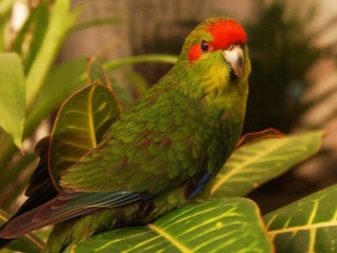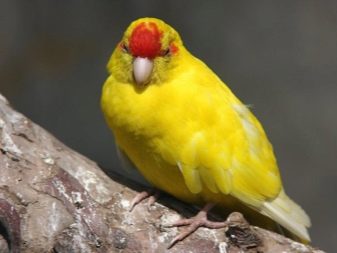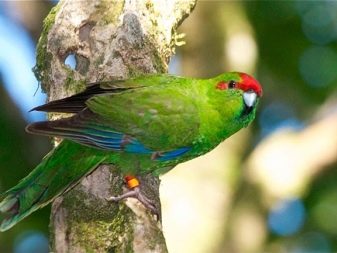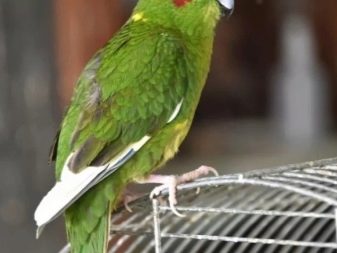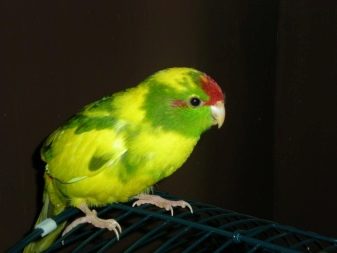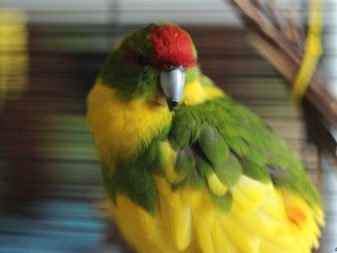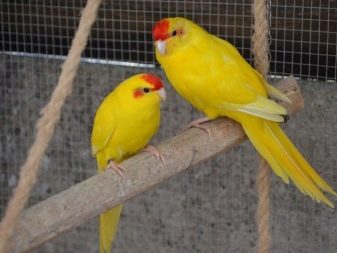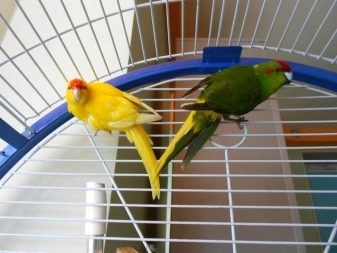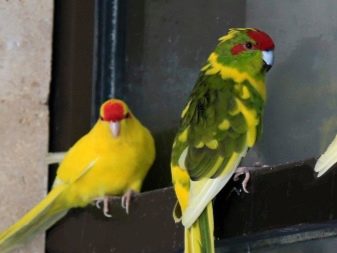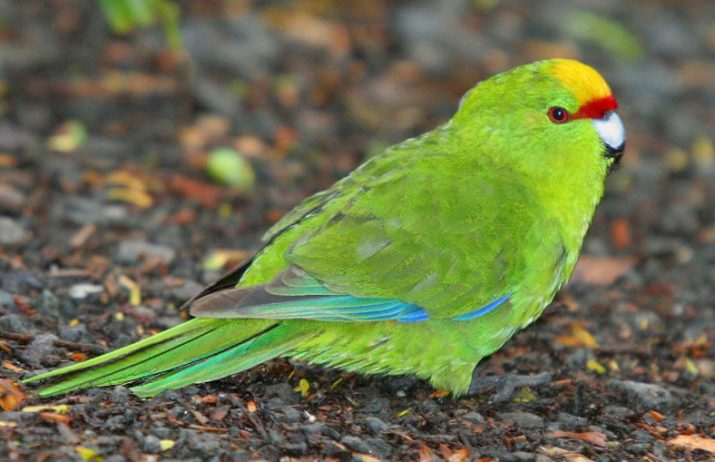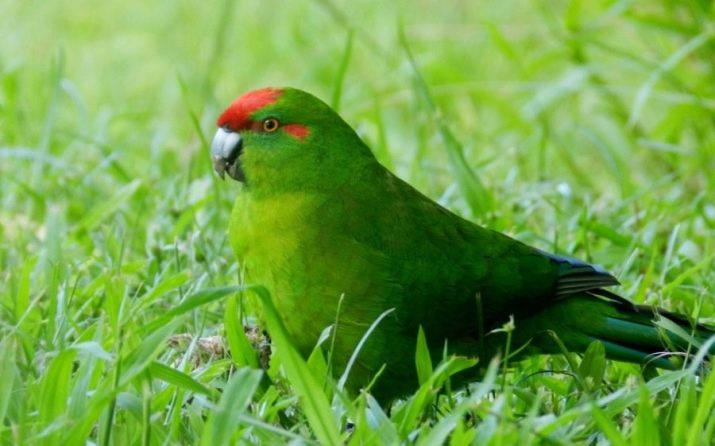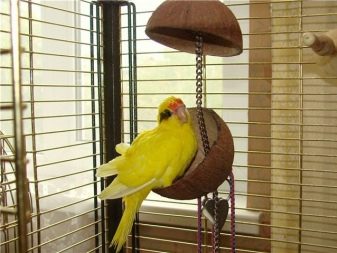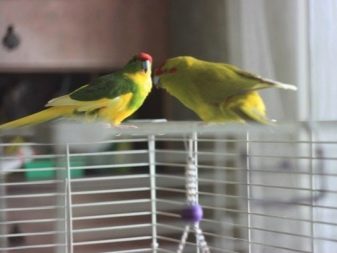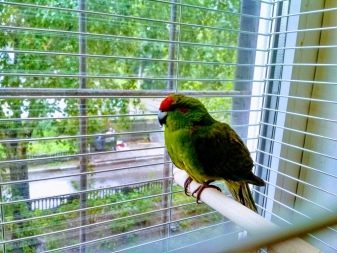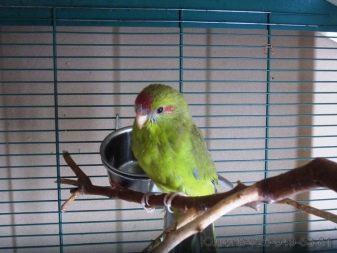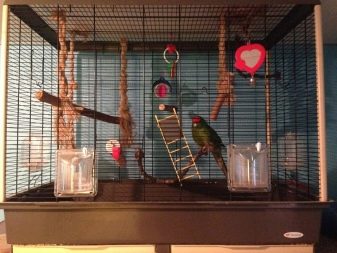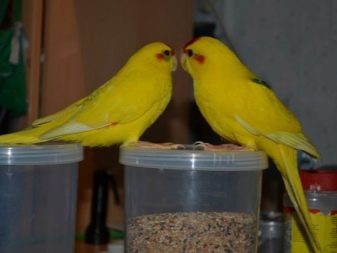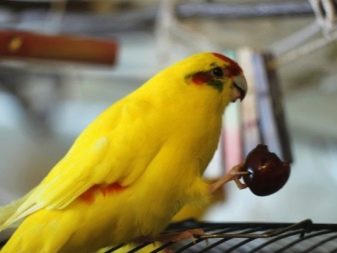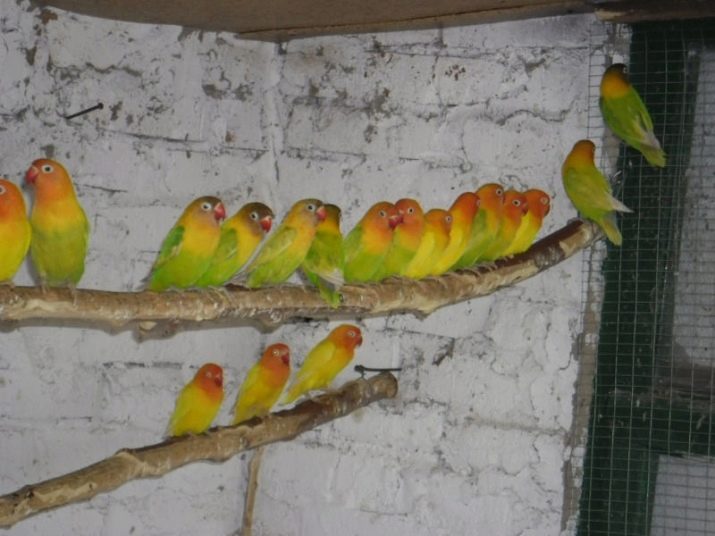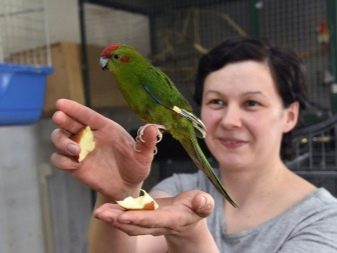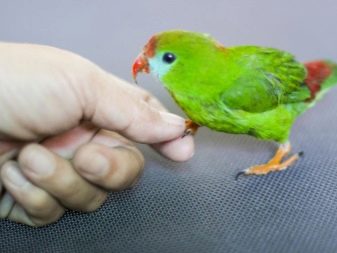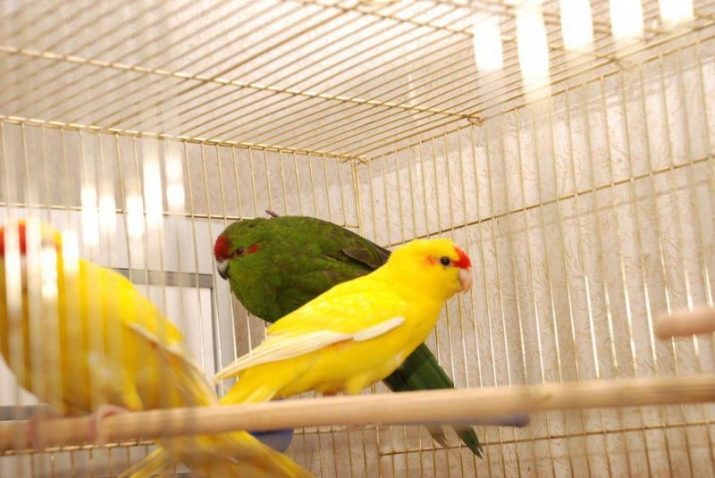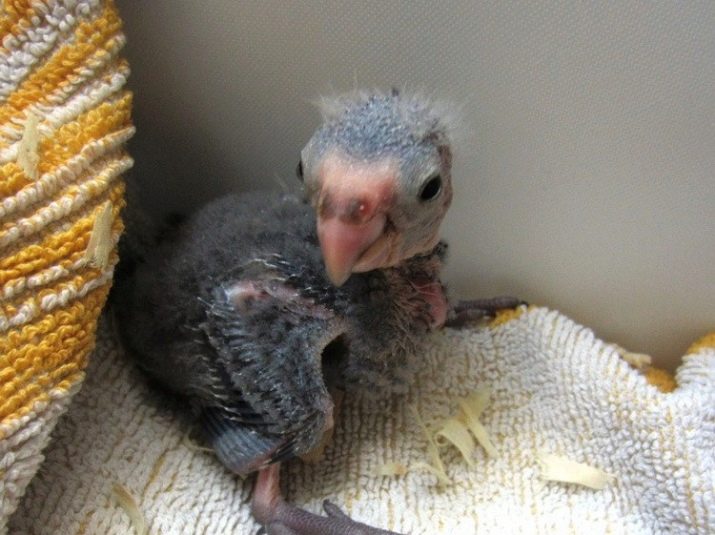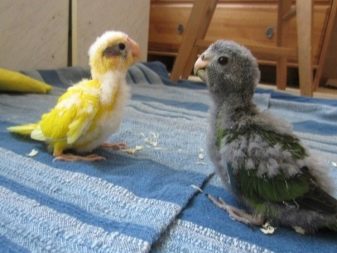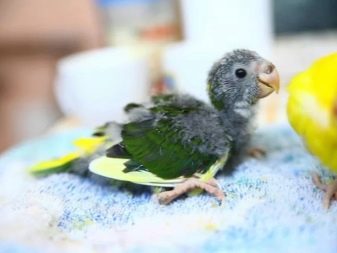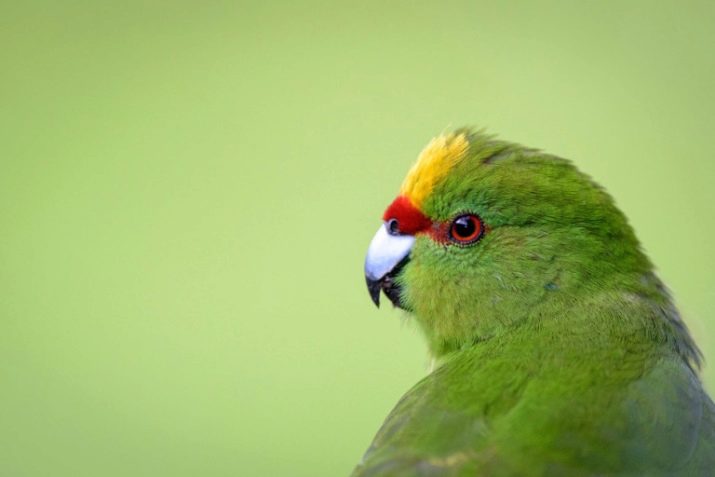Not long ago, a special kind of parrot appeared on the market - kakariki. Fans of birds as pets are increasingly preferred in favor of these birds. New Zealand parrots kakariki are distinguished by their vigor and great curiosity about the world. Before purchasing, it is recommended to learn about all the features of birds and the nuances of their content.
Description
- These birds differ in that they have quite strong paws and a powerful beak.
- The maximum body length is 30 cm. Their weight usually does not exceed 90 g.
- The maximum age of parrots can vary from 10 to 20 years - they rarely live more.
- The birds are mostly green in color, but the color of the plumage depends on the kakarik breed. Most often you can find green, yellow and red New Zealand birds.
- Birds are distinguished by their hyperactivity, which causes great interest among parrot lovers.
- There are kakariki in New Zealand and on islands located nearby.
- Due to the fact that birds rarely use their wings, they spend most of their time on the ground. Wings they need only in situations of extremely life-threatening.
- New Zealand parrots are very curious and almost never sit around.
- The dwelling of the bird is made low from the ground: usually it is hollow of trees or roots of various shrubs.
- Like many members of the parrot family, kakarik know how to talk.
The number of these wonderful New Zealand birds is getting smaller every year, so the species is considered endangered. The reason for this - large-scale deforestation. To save the population, people create special nurseries for the livestock and breeding of kakarik. The conditions in them are close to the wild, so the birds do not even feel the difference.
How to distinguish the female from the male?
Those who at least once kept parrots in their home, know that it is much more difficult to distinguish them by gender than our usual pets, such as cats or dogs.
There is an opinion that determining the gender of kakarik is quite simple. Males of birds differ in size from females. The same can be said about the weight: on average, a kakarik boy is more by 20 g. The beak and head of a male are more massive than those of females.
Owners of this species of birds emphasize that males are very vociferous and overly active, which is not the case with females. Usually the latter are more balanced and less mobile.
If you want to buy a parrot that is able to speak well, then it is recommended to give preference to kakarik males. Females are not able to show successful results in conversational skills, since they do not possess the necessary perseverance and are less inquisitive than the males.
New Zealand parrots are trained much faster than many representatives of this species.
If it is difficult to determine the sex, it is best to get it from a specialist. Feathered kakariki differ not only externally but also internally, and this must be taken into account when buying them. There are several basic principles for distinguishing the sex of parrots. We will talk about them below.
- As mentioned earlier, you can determine the sex of birds by comparing their sizes. For this reason, it is not recommended to buy a bird, if it is in a single copy at the store, since the floor is very difficult to install in such conditions.Thanks to the comparison, you can set the sex of birds.
- When choosing a parrot, you can also resort to weighing them. In this case, you need to know that the minimum weight of males is 80 g, and females - 60.
- Gender is determined by the size of the head. In males it is several times larger.
- Distinguish female and male in size beak. Males kakariki have a beak much wider and larger. In females, above the beak, there is an oblong spot that can reach the occiput.
- Determined by the sex of birds by their behavior: males are superior to females in their activity.
- Color of the cornea. In female birds, it has a corporal color, and in the male half of kakarikas it is dark blue.
If we take into account all the factors that differentiate females from males, then we can determine the sex of feathered birds with the naked eye.
Kinds
New Zealand parrots are divided into four main varieties, each of which has its own individual characteristics, therefore, outwardly such parrots are very easy to distinguish.
- Red-skinned kakarik. The presence of green plumage is characteristic of this species of the New Zealand bird. The tail of the parrot has a rich blue tint. The bird also has an edging on large feathers. Such individuals received their name due to the presence of a red strip between the eyes, which has a horizontal orientation.
Also the crown of the bird is painted in raspberry color. The beak of a parrot has a gray color, the tip of which is much darker than the main part. Many representatives of this species have not only bright green color - one of the main variations is also considered yellow plumage, covered with saturated small red spots.
- Yellow-skinned kakarik. The plumage of this species has a green color. The frontal part is often colored red, and the overhead is yellow. There are also small red spots above the tail on the back of the body. The beak of yellowstone has a pale blue tint, its tip is painted black.
- Mountain kakarik. This species of flightless parrots from New Zealand has a rich green color plumage. The abdominal part of the body is painted in lime color. The frontal part has a characteristic red tint. The beak of mountain parrots is gray with bluish tints.
- Antipodskiy kakarik. The main plumage of this species of New Zealand birds is colored green, with yellowish tints in the abdominal region. The overwing is colored lilac. The beak of anti-pod birds has a characteristic gray color, which smoothly changes to black color at the tip. Feathers are also painted gray.
Content Features
As with any pet, kakarik needs in a certain care.
- High humidity.
- The average temperature is about 17 degrees Celsius. The heat birds are extremely negative. Temperature changes also have a bad effect on the health of the bird.
- New Zealand birds should be protected from drafts.
- It is necessary to devote a lot of time to birds, play with them and pamper toys.
If you know the basic recommendations, you can arrange a place for birds. In the wild, birds live in nests or hollows of trees, but at home it is recommended to keep kakarikas in a cage, and you should regularly take care of birds.
The cage for the content of the parrot should be of large size. This applies to both the height of the structure and the floor area. Such criteria must be taken into account, because the bird spends most of its time on the ground.
Given these parameters, we can conclude that kakariki need to install an aviary. It is necessary that the room is well lit and warm. There should be enough space in a cage of this type, as New Zealand parrots are active and restless birds.
Resting birds only at night.
Do not forget about the placement in the cage of the feeder and drinking bowl.For high humidity in the aviary, you can install a small container with water. During the heating season, you need to monitor the humidity of the air, since during this period the air in the house is dry.
Care is a careful birdwatching. They should be protected from traumatic objects in the house, because, unlike many representatives of parrots, kakariki are deprived of the instinct of self-preservation.
This feature was influenced by their excessive curiosity towards the world around them.
The aviary in which the feathered bird lives should be cleaned at least once a week. From time to time it is necessary to clean the parrot feeders.
For a New Zealand parrot is recommended to make the right diet. There is nothing difficult in this process. Feed the bird to feed soft in its structure. They make up 1/3 of the feathered ration.
Birds also eat millet or oats. Portions should not be large. Rolls need vitamins and saturate the body with minerals, so from time to time you should use nutritional supplements during feeding. Sepia or chalk can be used as such vitamins. Sand is also sometimes added.
Succulent fodder means the inclusion in the diet of various fruits and vegetables. It is also recommended to give preference to greens and various berry cultures. Among the variety can select the optimal components for the diet of poultry:
- kiwi;
- carrot;
- peaches;
- celery;
- apricots;
- grapes;
- apples;
- Chinese cabbage;
- pears
How to tame a parrot to hands?
If you need to have a kakarik, you need to understand that it is almost impossible to get an intelligent and obedient pet at once. For this bird needs a lot to learn.
Another difficulty when buying a tropical pet is that it is not intended for maintenance at home. Kakarik live in the jungle in flocks. For this reason, the period of adaptation to new conditions can last for a long time. In this case, the bird needs the support of a new host.
In order to accustom the feathered one to the hands, the necessary actions should be carried out in stages.
- It is recommended to periodically spend some time near the cell. At first, this must be done daily. Thus, the parrot will no longer be afraid of new owners, and the level of trust will increase. The main thing is to show the bird that man is a friend to him and in no way an enemy.
- The second stage is to addict kakarikov to human hands. To do this, you should spend some time near the aviary, but additionally pushing the hands to the parrot and keeping them close - so the bird can quickly get used to the hands of its owner.
- The third stage includes the repetition of the actions of the previous stages. and coaxing a parrot with various delicacies. After some time, the feathered will get used to the hands and will not be afraid of them at all.
- After the parrot got used to the man, You can add different games. Kakariki are very fond of toys - it is not necessary to buy them, because you can make simple designs for entertaining the bird yourself. Regular tickling will already cause a huge amount of positive emotions in a feathered pet.
- At the last stage, the parrot is taught to sit on the master's finger.
The learning process does not require a complex approach - just hold the finger at the level of the abdomen of a parrot just above the legs of the bird.
Breeding
Rolls are subject to the breeding process at the age of one. It is strongly not recommended to cross among themselves such species as yellow-and red-skinned New Zealand parrots.
Breeding kakarikov at home does not present much difficulty, except for some nuances. For example, these birds are very picky in choosing a partner. After a female and a male are placed in a cage, sympathy does not arise immediately - this process can take several days.After some time, sympathy may not even arise. In this case, you need to pick up another parrot.
When there is sympathy, the parrots in a fairly sweet form take care of each other and have signs of attention. In this case, the birds water each other with water from their beak and help clean the wings.
After the sympathy has been shown, it is necessary to start preparing a house for the birds. The female lays eggs for several days, and in total this process does not take more than three days. The incubation period lasts on average about 3 weeks.
While the female kakarika incubates the eggs, the male provides proper care for her. After three days, the chicks hatch from the eggs. Newborn parrots do not have plumage. They are also born blind, and they receive the opportunity to see only after ten days.
A month later, the chicks appear plumage. They feed on mealy worms and egg feed. Food is obtained from the mother's beak.
After forty days after birth, the chicks may already feed on their own and live without their parents, but adult parrots look after them for about 14 more days. After two months, the chicks become completely independent.
During this period of time, you should carefully look after parrots, as adult birds can later aggressively treat their offspring. At the first urging, it is best to spread them out in different enclosures.
The maximum lifespan of kakarikov can reach 20 years. But only in a favorable environment can this result be achieved.
Owner reviews
On the Internet you can find a lot of reviews about this species of birds. Many say that it is better to keep ornamental plants away from parrots, since for kakarik it is a tasty morsel. Due to excessive love for ornamental plants, the owners of tropical birds are better off getting plants that have toxic substances in their structure, otherwise it can greatly harm the feathered friend.
Internet users also point out that the food of a parrot should in no way be heat treated, which is bad for the New Zealand bird. Their diet is recommended to saturate with greens and cereals. Also special preference kakariki give nuts.
New Zealand parrots feel good in a tropical climate, so they can not adapt to home conditions.
In this case, you can maintain the health of the pet by including in the diet of various biological additives and vitamins.
Because of the parrot restlessness, the water in the drinking pot is often polluted, therefore it is recommended to change it at least twice a day.
About kakarikah you can find a lot of positive feedback. The main difficulties of maintenance are manifested in their restlessness. For this reason, in the initial stages you need to be patient.
Also, many owners of feathered pets say that it is necessary to acquire New Zealand birds from breeders.
It is better that they are ringed, as in this case they will not be wild, and you can tame them much faster.
A story about kakarikah - see the next video.

